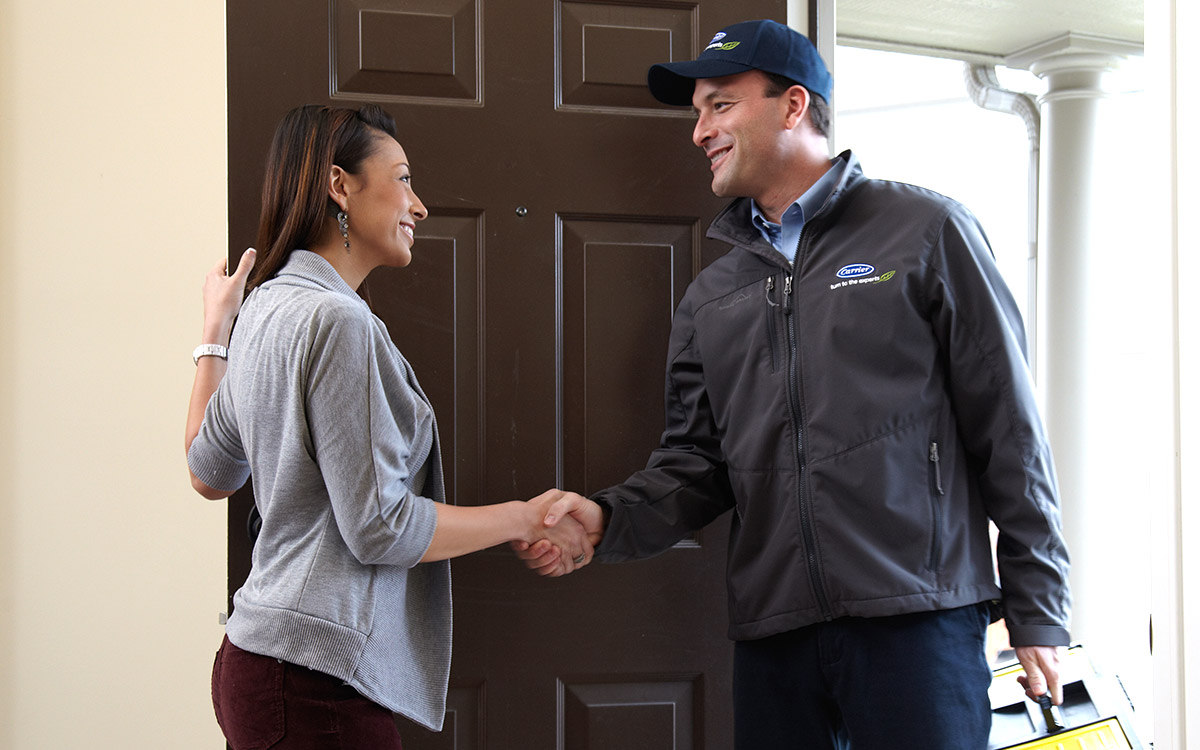
Owning an HVAC system can be a huge responsibility but it’s hard to live without one.
When you have an HVAC system, you’ll need to commit yourself to giving it regular maintenance and taking care of small issues before they turn into big problems.
That being said, HVAC drainage problems may seem like minor concerns but you’d be wrong—even a small leak from your HVAC system can turn into something more serious and cost you hundreds of dollars in repairs if you don’t act quickly.
So let’s take a look at some of the most common HVAC drainage problems and how you could fix them.
1. Blocked Condensation Drain Line
The condensation drain line’s job is to carry condensation from the air out of your HVAC system and into the drain pan under the indoor unit. Over time, this drain line may accumulate mold, mildew, and algae which can clog the drain line and this could lead to water backing up and leaking out of your HVAC system.
A few common signs of a clogged drain line are puddles of standing water around the unit, musty smells, and your HVAC system not cooling your home properly.
To prevent the condensation drain line from clogging up, you need to clean it regularly. You can do this by pouring a cup of water and bleach into the drain to get rid of mold and mildew.
2. Dry Drain Trap
The drain traps the U-shaped pipe of the condensation drain line that is used to prevent sewer gas from getting into your home. However, if the trap dries up, it can lead to bad smells coming into your home from the drain.
Also, sewer gas can be extremely dangerous as it has high levels of hydrogen sulfide, which can cause headaches, nausea, and eye irritation.
The drain trap may dry up if your HVAC system hasn’t been in use for a long time, like during the winter months or if the home was vacant while you were out on vacation. To stop this from happening, make sure to pour some water into the trap regularly when the HVAC system isn’t in operation.
3. Frozen Evaporator Coils
A frozen evaporator coil won’t affect your HVAC’s drainage system directly but it can cause condensation to leak. This happens when the coil freezes up, because it can restrict the airflow and cause condensation to back up.
Evaporator coils freezing up can be caused by a dirty air filter, low refrigerant levels, or a faulty blower fan. This type of problem can be difficult to fix on your own so consider calling a professional.
4. Damaged Drain Pan
If the drain pan under the indoor unit is damaged, it can leak water. Water leaking from drain pans can cause a lot of problems, like puddles indoors. These puddles can become safety hazards and they can cause mold and mildew to grow.
Drain pans may deteriorate with time due to rusting and when this happens, you might need to replace the pan completely. The replacement will need to be done by a trained HVAC technician.
5. Poor Installation
Without the proper slopes and traps installed, an HVAC system can fail to remove condensation efficiently. When you’re having a new HVAC system installed, you need to make sure the contractor follows the right procedures. These include:
- Sloping the drain line at least 1 inch per 10 feet for proper drainage
- Installing a drain trap to prevent sewer smells
- Using the proper drain line size
- Insulating the line against condensation if it runs through an unconditioned space
To make sure that your HVAC system is installed properly, you should consider calling a well-reputed HVAC installation company for the job.
How can drainage problems affect your HVAC system?
HVAC drainage problems can lead to other issues down the road. These include:
1. Increased Energy Costs
Clogged drain pipes can affect the airflow of the HVAC system. This can lead to the HVAC system using more power to cool or heat your home, resulting in higher-than-usual electricity bills.
2. Shortened Lifespan
Drainage problems can cause the HVAC system’s inner components to corrode over time. This can lead to some of these components failing and reducing the lifespan of the HVAC system considerably.
3. Health Hazards
Drainage issues with HVAC systems, as mentioned earlier, can lead to mold and mildew growth. Mold releases spores into the air and these spores can be harmful to people with allergies and medical conditions like asthma.
About 1 in 5 people in the USA have environmental allergies and mold is classified as an environmental allergen. So if you have young children or elderly family members who have allergies, you should consider getting leaks in your HVAC system fixed immediately before mold starts to grow.
Frequently Asked Questions
Below are some commonly asked questions about HVAC drainage problems to consider:
1. Can high humidity levels cause mold and mildew growth in condensation drains?
Yes, high humidity levels may accelerate the growth of mold and mildew in your drain lines.
2. Aside from bleach, are there any other types of cleaners I can use to kill mold in the drain lines?
It’s better to stick with using bleach or vinegar and avoid chemical cleaners entirely. Chemical cleaners can damage your drain pipe.
3. Do clogged HVAC drains cause noise?
Yes, in some cases, a clogged condensation drain might make gurgling noises when the HVAC is working.
Call a professional if you have HVAC drainage problems
Drainage problems in HVAC systems can be a major headache and you might not have time in your busy schedule to look into them—this is where HVAC maintenance technicians can help you.
HVAC maintenance services can help you take care of your drainage problems so that you can get the maximum out of your HVAC system and keep your home safe from mold and water hazards.
If you’re noticing suspicious water puddles near your HVAC system, call a professional today.

